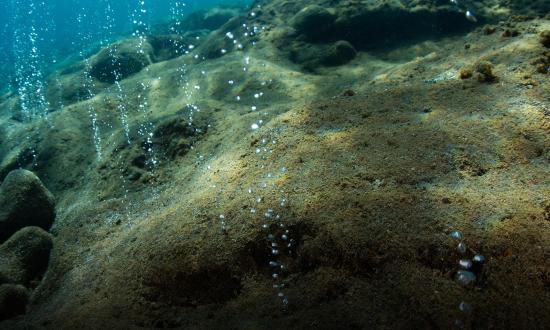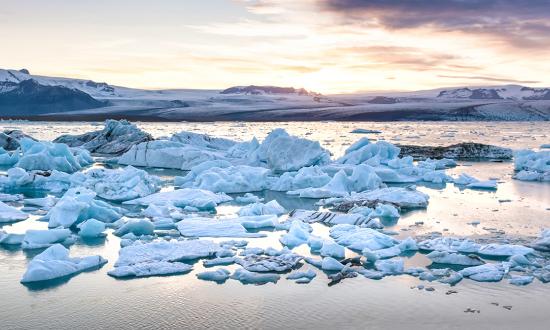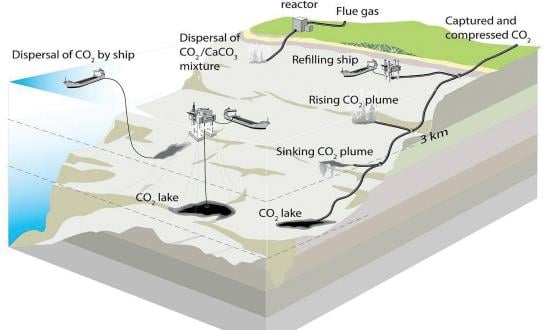The oceans are warming, and the increase in heat is a consequence of anthropogenic climate change. This is a key message of the Intergovernmental Panel on Climate Change’s Special Report on the Ocean and the Cryosphere in a Changing Climate (SROCC), according to which more than 90 percent of the excess heat resulting from climate change has been absorbed by the upper layers of the oceans. During the past two decades, the increasing global heat content has been reflected more dramatically in oceanic events called marine heatwaves (MHWs). MHWs are extended periods (weeks or years) of extremely high sea-surface temperatures that can occur in coastal seas and major ocean basins.
The 2019 SROCC also states that MHWs very likely have doubled in frequency (1982–2016) and are more extensive. Marine researchers have shown recent MHWs to be more intense and longer-lasting. Climate models also point to the plausibility of more permanent MHWs in the 21st century; these future warming events could be more than 360 days in duration and could create their own marine microclimates. The effects on marine ecosystems are only beginning to be studied. Implications for coastal and island states are enormous, since their social and economic systems depend on the oceans.
Three notable recent MHWs occurred in the Tasman Sea off Australia (2015–16) and off the U.S. West Coast (2013–16 and 2019). The Tasman Sea MHW lasted for 251 days, reaching a maximum intensity of 5.3 degrees Fahrenheit above the normal oceanic climatology. This was the largest and most intense MHW on record for this region; an area of 140,000 square miles, seven times larger than Tasmania, was affected by this pool of warm water. Coastal fisheries and aquaculture farms (oysters, abalone, and salmon) were negatively affected, and the region experienced an influx of new marine species and a change in biodiversity.
The extreme MHWs observed along the West Coast of North America during 2013–16 and 2019 were notable for their large expanse. This huge mass of warm water, nicknamed the Blob, first appeared off the Alaskan coast and eventually extended south to Mexico and Baja California. Sea surface temperatures were as much as 10.8 degrees Fahrenheit higher than average, and the stratification, or layering, of the upper ocean was strengthened such that upwelling cooler and more nutrient-rich waters could not reach the surface.
During the winters of 2013 and 2014, the normal cooling of the northeast Pacific Ocean was reduced by the persistence of much warmer surface waters. Excessively warm water brought the largest algal bloom recorded on the West Coast, leading to closures of clamming and crabbing. Widespread fisheries effects included a decrease in biomass for Pacific cod, sockeye salmon, and Californian anchovy. These recent MHWs are a wakeup call for new management and conservation measures to enhance coastal adaptation and resilience.
A review of MHWs in all ocean basins reveals a broad set of effects on marine ecosystems, such as the bleaching of coral reefs; mass mortality of marine species; sudden changes in the biodiversity of regional ecosystems; production declines in fisheries and coastal mariculture; increases in toxic algal blooms; distribution changes in phytoplankton and zooplankton; and effects on the entire marine food chain. Each of these events and its severe effects have highlighted the need for robust satellite monitoring of sea-surface temperatures and new, real-time observation systems to better track and forecast future MHWs. Further, MHWs must be viewed in a broader context among other ocean stressors, such as ocean acidification, overfishing, regional pollution, and low-oxygen marine zones.
Heat waves on land, particularly those in major cities resulting in loss of human life, receive appropriate global attention and concern. Extreme warming events in the oceans are less visible and more subtle but can have critical effects on the long-term health of marine ecosystems. More frequent and intense MHWs in an era of global warming portend more complex environmental and economic challenges for coastal communities.







